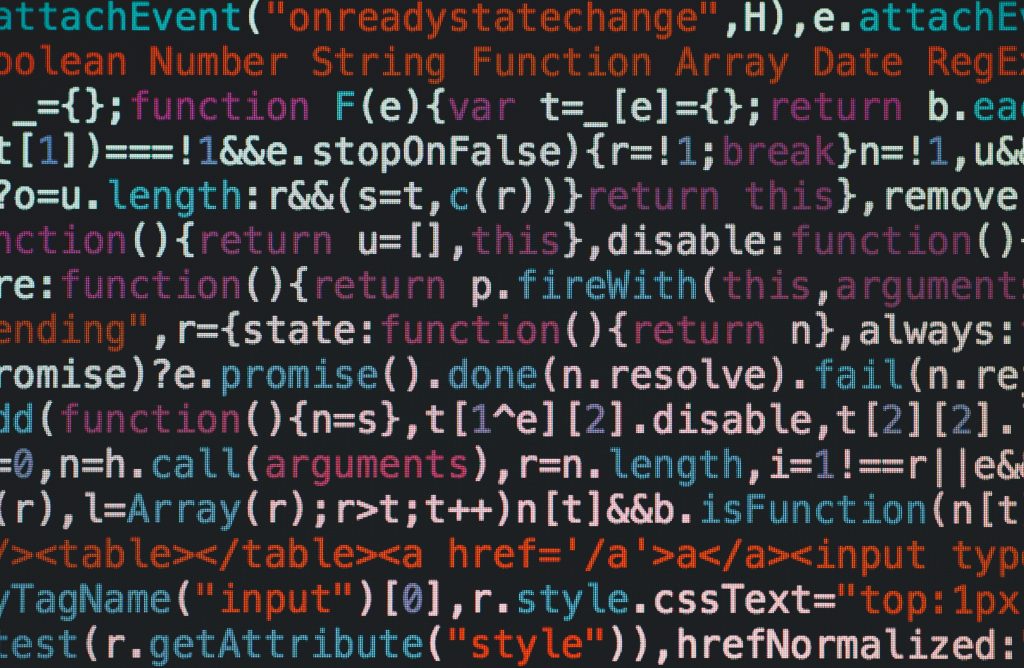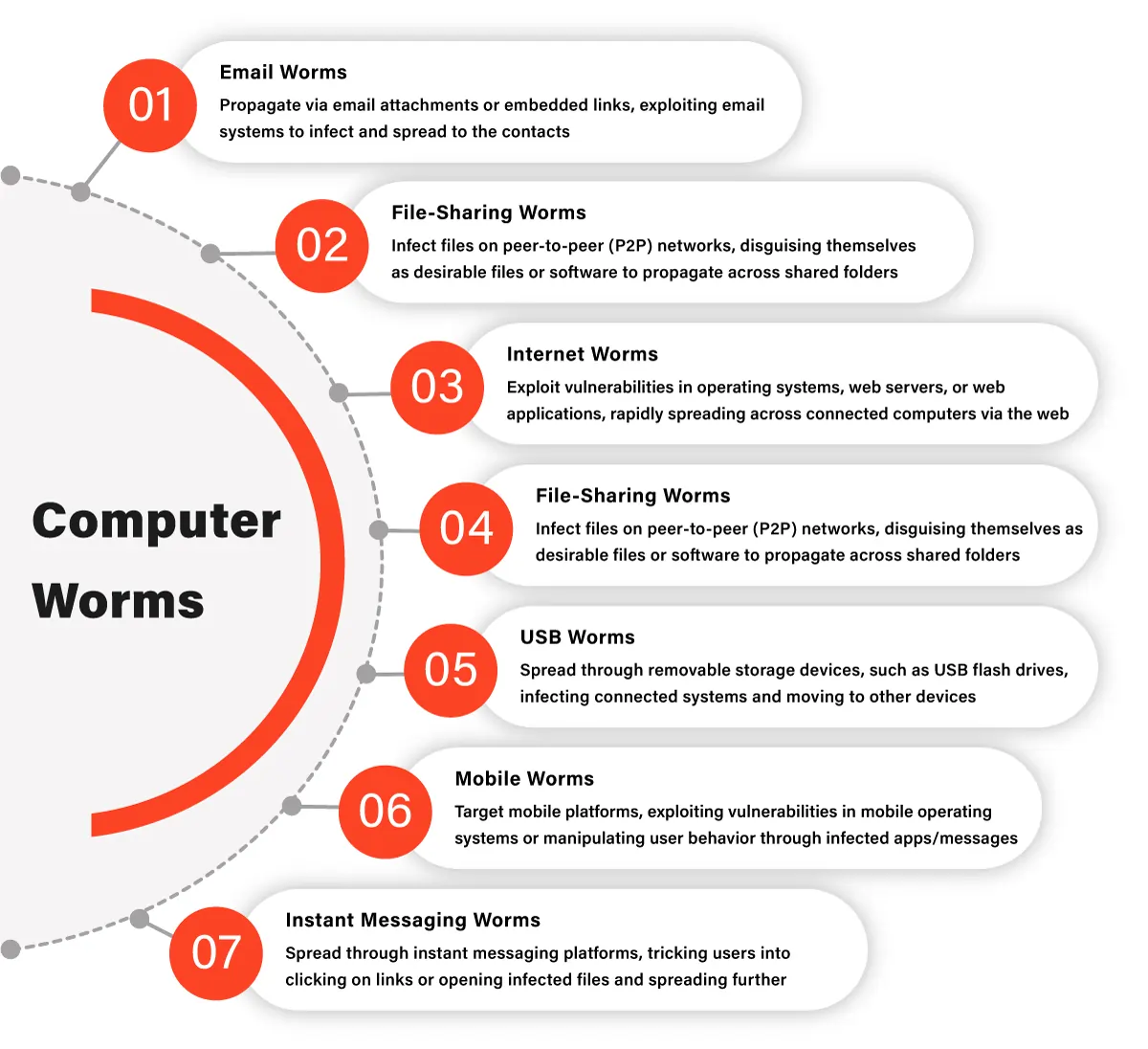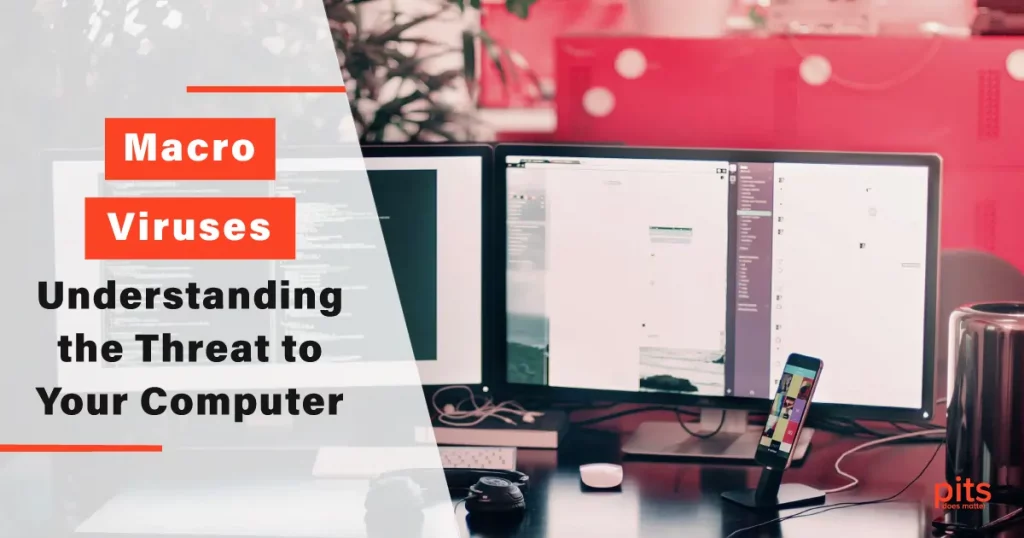Computer worms have emerged as a prominent and destructive force in the vast landscape of cybersecurity threats. These malicious programs have caused billions of dollars in damages and wreaked havoc on individuals, businesses, and governments. Understanding the nature and modus operandi of computer worms is crucial for protecting ourselves and our digital assets. In this comprehensive guide, we will delve into the world of computer worms, exploring their characteristics, how they infect systems, their various types, the methods by which they spread, their mechanisms of operation, and the measures we can take to safeguard against them.
Understanding Computer Worms
A computer worm is a type of malware that replicates itself and spreads autonomously without requiring any human intervention. Unlike computer viruses that require a host file to attach themselves to, worms can function as standalone programs. This ability to self-replicate makes them particularly dangerous, as they can rapidly infect a large number of systems, causing widespread damage.

A computer worm is a self-replicating program that can spread from one computer to another through various means. It is designed to exploit vulnerabilities in computer systems and networks, allowing it to infect and compromise targeted machines.
Worms differ from computer viruses in that they do not need a host file to propagate.
They can operate independently and often have specific payloads or actions they perform once they infiltrate a system. Some common types of malware include viruses, worms, trojans, ransomware, and spyware.
Malware is a blanket term for any type of malicious software designed to harm or exploit a computer system. Cybercriminals often create malware with the intention of stealing sensitive information, disrupting normal operations, or gaining unauthorized access to a network. Malware can be spread through various means, such as infected emails, compromised websites, or even physical media like USB drives.
How Does a Computer Worm Infect Systems?
Computer worms employ several methods to infect systems and networks. One common avenue is through email attachments or links. Unsuspecting users may unknowingly open an infected attachment or click on a malicious link, thereby activating the worm. Once inside a system, the worm can spread to other devices within the same local area network (LAN) or across the Internet.
Another method utilized by worms is through file sharing. Worms can disguise themselves as harmless media files or software programs and spread them through peer-to-peer networks or file-sharing platforms. This method exploits users’ trust in shared content, leading them to unknowingly download and execute the malicious program.

Types of Computer Worms
Computer worms come in various forms, each with its own unique characteristics and methods of propagation. Here are some common types of computer worms:
Email Worms
These worms spread through email attachments or links. Once activated, they replicate themselves and send copies of the worm to the victim’s contacts, continuing the cycle of infection.
File Sharing Worms
These worms exploit file-sharing networks to propagate. They often masquerade as legitimate files or popular media, enticing users to download and execute them, which triggers the worm’s replication and spread.
Internet Worms
These worms exploit vulnerabilities in network services or software to spread across the Internet. They can infect numerous systems quickly, causing significant disruption.
Morris Worm
The Morris Worm, one of the earliest and most infamous worms, targeted UNIX-based systems in 1988. It exploited weaknesses in the network protocols and caused widespread congestion, significantly affecting internet operations at the time.
How Computer Worms Spread
Computer worms employ several techniques to spread from one system to another. Once inside an infected computer, a worm can scan the local network or the internet for vulnerable devices. It seeks out security weaknesses, such as unpatched software or default passwords, to gain unauthorized access. The worm then exploits these vulnerabilities to infiltrate the target system, where it can further propagate.
The ability of worms to spread rapidly is facilitated by their autonomous nature. Unlike other malware, worms can initiate self-replication and propagate without user interaction. This automation allows them to infect multiple systems within a short period, creating a domino effect of infections.
How Computer Worms Work
Once a computer worm successfully infects a system, it can carry out various malicious activities. These activities may include:
1. Propagation
Worms often exploit vulnerabilities in operating systems, applications, or network services to gain initial access to a target system. These attackers search the internet or local network for susceptible computers, seeking out particular vulnerabilities they can exploit. Such vulnerabilities may involve software lacking updates, easily guessable passwords, or improperly set up services.
2. Payload Delivery
After locating a weak system, a worm sends a payload to infiltrate it. The payload consists of malicious code or instructions that give the worm control over the targeted system. These instructions may include self-replication, establishing a connection with a command-and-control server, or carrying out specific harmful actions.
3. Replication
Worms possess a distinctive trait of self-replication, generating duplicates of themselves to infect other network systems. This reproducing procedure can manifest through different means, including sending infected email attachments, exploiting network shares, or leveraging known weaknesses to infiltrate other systems.
4. Network Scanning
Worms consistently search the network for fresh potential targets. They employ various methods to pinpoint susceptible systems, such as scanning IP addresses, ports, and identifying services. When a new target is discovered, the cycle restarts and the worm endeavours to infect the newly found system.
5. Command and Control (C2)
Some worms connect with a remote command-and-control server controlled by the attacker. This server sends instructions to the infected systems, alters the worm’s actions, or gathers data from the compromised systems. This centralized control allows attackers to coordinate and supervise large-scale attacks.

6. Persistence
Worms might try to persist on compromised systems in order to maintain access or evade detection and removal. They can establish backdoors, alter system configurations, or manipulate security mechanisms, making it difficult for users or security tools to identify and eliminate them.
Taking proactive cybersecurity steps is necessary to prevent worm infections. These measures include regularly applying security patches, utilizing robust and distinctive passwords, implementing network security protocols, and keeping antivirus software up to date for effective detection and elimination of malicious code. Moreover, educating and raising awareness among users are vital in reducing the risk of becoming victims of worm attacks.
Protecting Against Computer Worms
Given the destructive potential of computer worms, it is essential to take proactive measures to protect against them. Here are some key steps you can take:
Keep Software Updated
Regularly update your operating system, applications, and security software to ensure that you have the latest patches and protection against known vulnerabilities.
Use Strong and Unique Passwords
Employ strong, complex passwords for all your accounts and avoid using the same password across multiple platforms. Consider using a password manager to securely store and manage your passwords.
Exercise Caution with Email Attachments and Links
Be vigilant when opening email attachments or clicking on links, especially if they come from unknown or suspicious sources. Scan attachments with an up-to-date antivirus program before opening them.
Enable Firewall and Antivirus Protection
Activate a firewall to monitor incoming and outgoing network traffic and use reputable antivirus software to detect and remove malicious programs.
Practice Safe File Sharing
Be cautious when downloading files from file-sharing networks. Verify the authenticity of the source, scan files for malware before execution, and use reputable platforms that implement security measures.
Educate Yourself and Stay Informed
Stay updated on the latest cybersecurity threats and best practices. Educate yourself about common social engineering techniques used by attackers and exercise caution while interacting with digital content.
Regularly Backup Your Data
Create backups of important files and ensure they are stored securely. In the event of a worm infection or any other data loss incident, backups can help restore your information.
By implementing these measures and maintaining good cybersecurity hygiene, you can significantly reduce the risk of falling victim to computer worms and other malware.
Computer worms pose a significant threat in today’s interconnected digital landscape. Their ability to self-replicate and spread autonomously makes them highly destructive and challenging to combat. By understanding their nature, methods of infection, propagation, and operation, we can take proactive steps to protect ourselves and our digital systems. Regularly updating software, exercising caution with email attachments and links, and implementing strong security measures are essential in mitigating the risks posed by computer worms. By staying informed and adopting a proactive approach to cybersecurity, we can navigate the digital world with greater confidence and safety.
Frequently Asked Questions
What is a computer worm?
A computer worm is a type of malware that can replicate itself and spread from one computer to another without any human intervention. Unlike viruses, worms do not require a host file to attach themselves to and can operate independently.
What damage can computer worms cause?
Computer worms can cause significant damage to infected systems and networks. They can delete files, encrypt files and demand ransom, launch DDoS attacks, install backdoors for unauthorized access, or transform infected machines into botnets. The financial consequences of worm attacks can reach billions of dollars in damages.
What is a computer worm, and how is it different from a computer virus?
A computer worm is a type of malicious software that can replicate itself and spread independently from one computer to another. Unlike viruses, worms do not require a host file to attach themselves to. They can operate as standalone programs and spread through various means, including networks and the internet.
How can I protect my computer against computer worms?
To protect your computer against worms, it’s important to follow good cybersecurity practices. Keep your operating system, applications, and security software up to date with the latest patches and updates. Use strong and unique passwords, enable firewalls, and install reputable antivirus software. Be cautious when opening email attachments or clicking on links from unknown or suspicious sources.
Can computer worms be removed from an infected computer?
Yes, it is possible to remove computer worms from an infected computer. You should use reputable antivirus or anti-malware software to scan your system and remove the malicious program. It’s crucial to keep your antivirus software up to date and perform regular system scans. In some cases, advanced or persistent worms may require specialized removal tools or the assistance of cybersecurity professionals.
